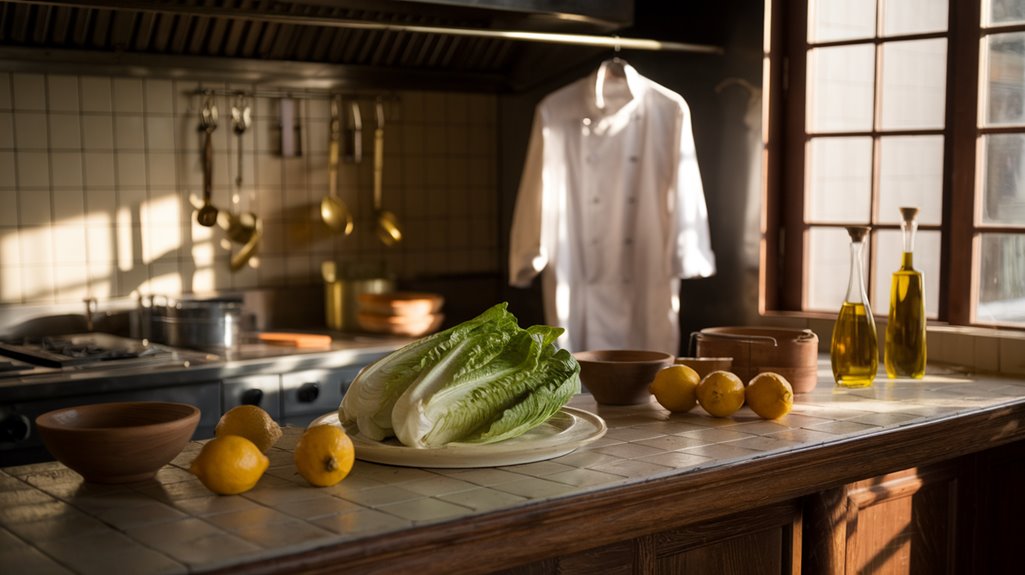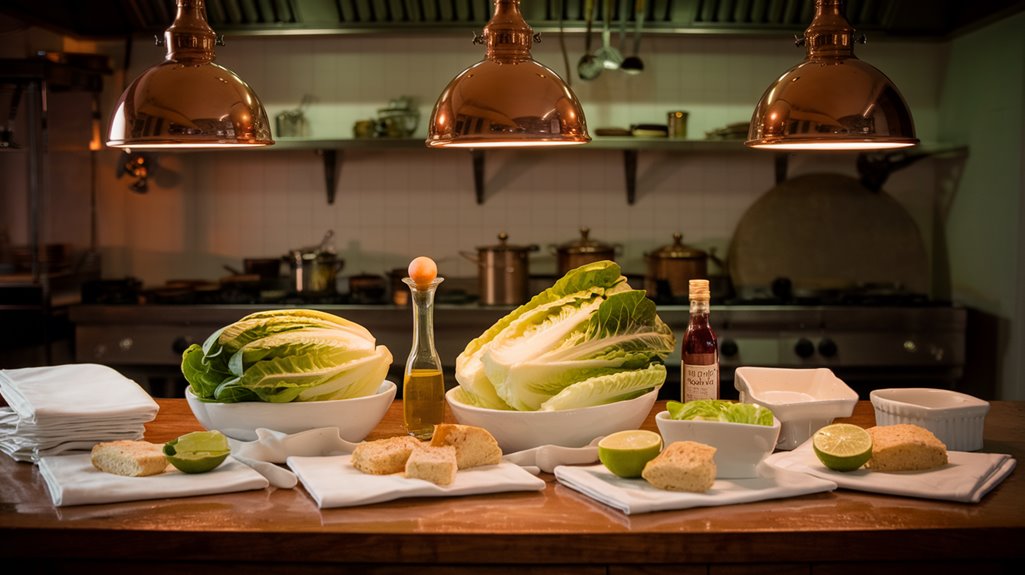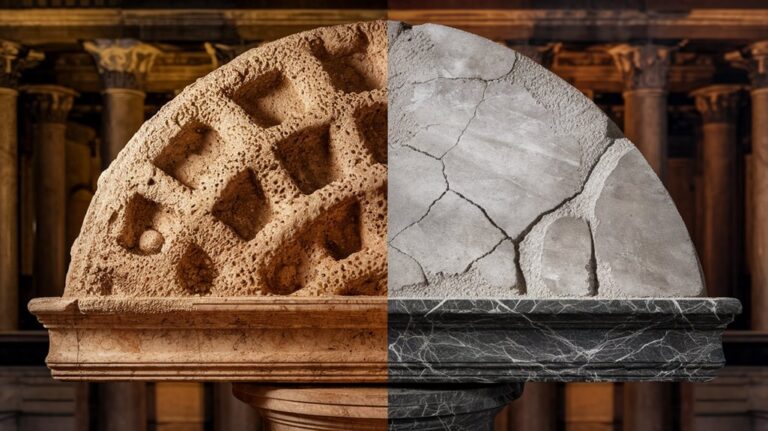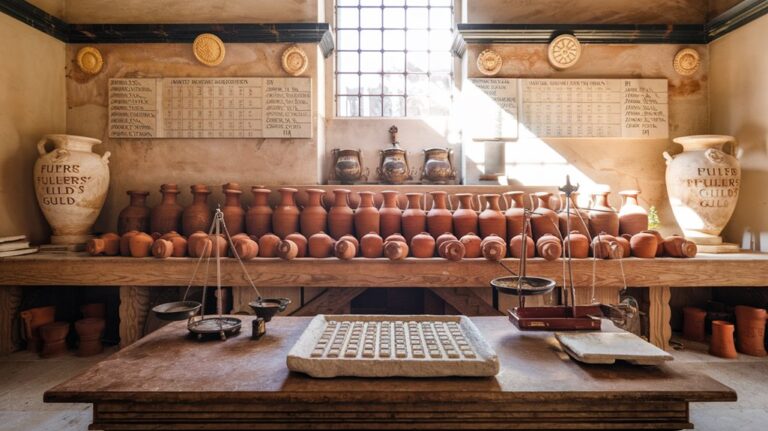Caesar Salad Was Not Named After the Roman Emperor
Like an emperor's crown mistakenly placed on a chef's head, the story of the Caesar salad carries a persistent historical mix-up. You've probably assumed this popular dish traces back to ancient Rome, but you'll find its roots in a much more recent time and unexpected place. The true tale involves an Italian immigrant, a busy restaurant in Mexico, and a moment of culinary improvisation that changed restaurant menus forever. What unfolds next might make you question everything you thought you knew about this legendary dish.
The Real Story Behind the Caesar Salad Name
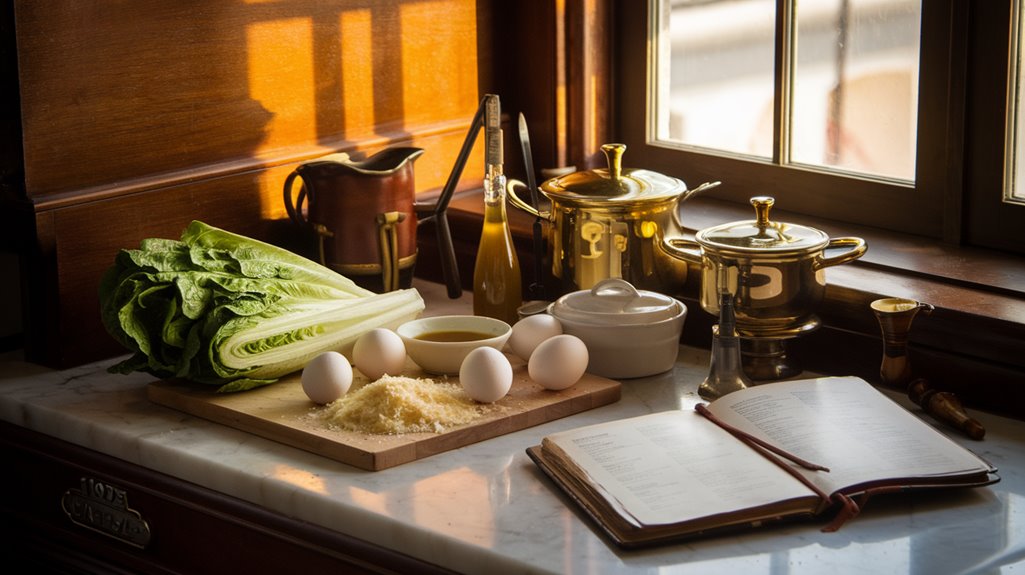
Misconceptions about the Caesar salad's namesake have persisted for decades. You might think it's named after Julius Caesar, but you'd be wrong. The salad's true creator was Caesar Cardini, an Italian immigrant who ran a restaurant in Tijuana, Mexico.
During a busy Fourth of July in 1924, when his kitchen was running low on ingredients, Cardini created this now-famous dish. The salad gained such acclaim that it was voted greatest recipe from the Americas by the International Society of Epicures in Paris during the 1930s. Cardini had previously operated restaurants in California before moving his business to Mexico.
While salad variations have emerged over time, the original recipe featured romaine lettuce, raw egg, olive oil, croutons, Parmesan cheese, and Worcestershire sauce.
These culinary influences reflect the international nature of its creation – an Italian chef serving American customers in Mexico.
While some debate exists over whether Cardini's brother Alex or employee Livio Santini might've created it first, one thing's certain: Julius Caesar had nothing to do with it.
Birth of an Iconic Dish in Tijuana
While Tijuana today might be known for its vibrant food scene, Caesar's Restaurant helped put the city on the culinary map back in 1923.
When Caesar Cardini opened his establishment in a small alley, he couldn't have predicted that a busy July 4th in 1924 would lead to one of the greatest culinary innovations in American history.
During Prohibition, Americans flocked across the border to enjoy Tijuana cuisine and nightlife.
On that fateful Independence Day, when his kitchen supplies ran low, Cardini's improvisation resulted in the now-famous Caesar Salad.
The theatrical tableside preparation added an element of sophistication that captured diners' attention. The original recipe featured no anchovies whatsoever, relying instead on garlic and Parmesan for its distinct flavor.
The salad was initially called the Aviators salad after entertaining U.S. airmen during the Independence Day celebration.
The dish gained such acclaim that master chefs later declared it the greatest recipe from the Americas in fifty years, cementing its place in culinary history.
Key Elements of the Original Recipe
Three essential components define the original Caesar salad recipe: fresh, high-quality ingredients, tableside preparation, and careful attention to technique.
You'll find that authentic dressing techniques involve coddling egg yolks and whisking them with olive oil, while incorporating fresh garlic, anchovies, and Dijon mustard. Unlike modern variations, the original recipe doesn't use mayonnaise. Today's simplified versions often include mayo-based dressings for convenience.
When it comes to ingredient variations, you might be surprised to learn that the classic version calls for lime juice rather than lemon. The salad was first created at Caesars Restaurant in Tijuana, where it continues to be prepared tableside today.
You'll need to prepare homemade croutons from baguette slices, and always grate fresh Parmesan cheese. The traditional recipe emphasizes the importance of using Romaine lettuce leaves and seasoning with freshly ground black pepper.
Every element is crafted from scratch, avoiding pre-made components entirely.
From Border Town Creation to Global Sensation
Despite its current global fame, the Caesar salad emerged from humble beginnings in Tijuana, Mexico, during the Prohibition era. At Caesar Cardini's restaurant, this culinary masterpiece was born on July 4, 1924, when the kitchen was running low on supplies. Italian-born chef Cardini created this iconic dish using only the ingredients he had available that day.
The original recipe was often prepared with a fresh lime juice base, which remains true to this day in Tijuana establishments.
Initially known by some as the "Aviator's Salad," it quickly gained popularity among Americans crossing the border to escape alcohol restrictions.
The cultural significance of this creation has only grown with time. Today, you'll find Caesar salad on nearly a quarter of restaurant menus worldwide, with fascinating culinary adaptations emerging across different cuisines.
It's particularly interesting to note that Indian cuisine now leads the trend in incorporating this classic dish, showing how a simple border town creation has transformed into a versatile global sensation that continues to captivate diners worldwide.
Setting the Historical Record Straight
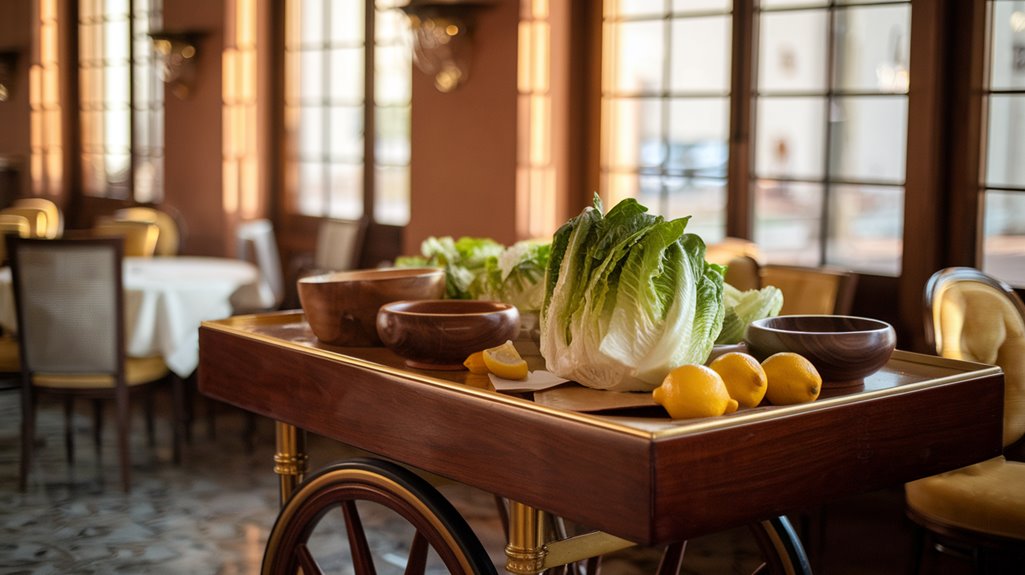
Despite common cultural misconceptions, the salad wasn't named after Julius Caesar or created in ancient Rome. Instead, you'll find its true origins in 1924 Tijuana, Mexico, where Italian immigrant Caesar Cardini crafted it at his restaurant.
The salad's culinary evolution began during Prohibition when American tourists would cross the border for dining and entertainment. Cardini's creation was born from necessity and showmanship, featuring a dramatic tableside preparation that helped establish its legendary status.
Different spellings like Ceasar and Cesar have emerged over time, leading to ongoing confusion about the proper way to write the name.
Food writers and critics played a crucial role in introducing the salad to mainstream American cuisine throughout the 1930s.
While some dispute whether Caesar, his brother Alex, or an employee invented it, there's no question about its birthplace.
The dish's components were simple: romaine lettuce, raw egg, olive oil, croutons, Parmesan cheese, and Worcestershire sauce.

